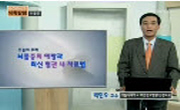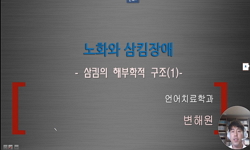Objectives : This study was a systematic review of tongue movements in stroke patients with dysphagia. This study aimed to provide a basis for verifying the effects of tongue movement and identifying the tendency of tongue movement. Methods : A system...
http://chineseinput.net/에서 pinyin(병음)방식으로 중국어를 변환할 수 있습니다.
변환된 중국어를 복사하여 사용하시면 됩니다.
- 中文 을 입력하시려면 zhongwen을 입력하시고 space를누르시면됩니다.
- 北京 을 입력하시려면 beijing을 입력하시고 space를 누르시면 됩니다.

혀 운동(tongue exercise)이 연하장애를 가진 뇌졸중 환자에게 미치는 효과 : 체계적 고찰 = Effect of Tongue Exercise on Stroke Patients With Dysphagia : A Systematic Review
한글로보기https://www.riss.kr/link?id=A108247091
- 저자
- 발행기관
- 학술지명
- 권호사항
-
발행연도
2022
-
작성언어
Korean
-
주제어
Dysphagia ; Stroke ; Swallowing rehabilitation ; Tongue exercise ; 뇌졸중 ; 연하장애 ; 연하재활치료 ; 혀운동
-
등재정보
KCI등재
-
자료형태
학술저널
-
수록면
7-22(16쪽)
-
KCI 피인용횟수
0
- 제공처
-
0
상세조회 -
0
다운로드
부가정보
다국어 초록 (Multilingual Abstract)
Objectives : This study was a systematic review of tongue movements in stroke patients with dysphagia. This study aimed to provide a basis for verifying the effects of tongue movement and identifying the tendency of tongue movement.
Methods : A systematic review was conducted using the Preferred Reporting Items for Systematic Reviews and Meta-Analyses checklist and flow chart. PubMed, MEDLINE, CINAHL, RISS, and e-articles databases were searched. A total of six documents were investigated, and the PEDro scale was used to evaluate the quality of the papers.
Results : Three intervention methods were included in the six papers analyzed. Regarding the type of tongue exercise, three TPRT (Tongue to Palate Resistance Trainings) and two TSAT (Tongue Strength and Accuracy Training) were mediated through the IOPI (Iowa Oral Performance Instrument), and only one study applied TSE (Tongue Stretching Exercise). The treatment effects for each intervention implemented in the literature were confirmed to be effective. However, generalizability of findings is difficult because of the small sample size. Further, no significant difference was found between the experimental and control groups.
Conclusions : This study can help occupational therapists provide efficient swallowing rehabilitation treatment by applying tongue exercises to stroke patients with dysphagia. More research should be conducted to determine the effects of tongue exercise.
국문 초록 (Abstract)
목적 : 본 연구는 연하장애를 가진 뇌졸중 환자에게 적용된 혀 운동을 체계적으로 분석한 논문이다. 혀운동에 대한 전반적인 효과를 검증하고, 현재 이루어지고 있는 혀 운동에 대한 경향을 ...
목적 : 본 연구는 연하장애를 가진 뇌졸중 환자에게 적용된 혀 운동을 체계적으로 분석한 논문이다. 혀운동에 대한 전반적인 효과를 검증하고, 현재 이루어지고 있는 혀 운동에 대한 경향을 파악하는데그 목적을 가지고 근거를 제공하고자 한다.
연구방법 : PRISMA(Preferred Reporting Items for Systematic Reviews and Meta-Analysis) 체크리스트및 흐름도를 이용하여 체계적 고찰을 시행하였다. 데이터베이스는 PubMed, MEDLINE, CINAHL, RISS, e-article 을 통해 문헌 검색을 진행하였다. 본 연구에 사용된 문헌의 수는 총 6편이었고, 문헌의 질을평가하기 위하여 PEDro scale(Physiotherapy Evidence Database scale)을 사용하였다.
결과 : 분석된 논문 6편에서 3가지의 중재 방법이 포함되었다. 혀 운동의 종류로는 혀 근력훈련 3편, 혀 근력 및 정확도 훈련 2편으로 모두 아이오와 구강 수행 도구를 통한 중재를 시행하였고, 혀 신장훈련을 적용한 논문이 1편이었다. 조사된 문헌에서 시행한 중재 별 치료 효과는 모두 효과가 있는 것으로확인되었다. 하지만 대부분 표본수가 적어 일반화 시키기는 어려울 것으로 생각되며, 실험군과 대조군비교 시 몇몇 그룹 간에 유의한 차이가 발견되지 않은 결과들이 있는 만큼 전통적 연하재활치료도구강기 연하장애를 가지고 있는 환자들에게 적절한 치료 방법으로 판단된다.
결론 : 본 연구는 작업치료사들이 연하장애를 가진 뇌졸중 환자들에게 혀 운동을 적용함에 있어 효율적인연하재활치료를 제공하는데 도움을 줄 수 있을 것이며, 혀 운동의 효과를 알아보기 위해 더 많은 연구축적이 이루어져야 할 것으로 생각된다.
참고문헌 (Reference)
1 문종훈 ; 김희진 ; 강민규 ; 원영식, "혀 근력 및 정확도 훈련이 삼킴장애가 있는 만성 뇌졸중 환자의 혀 근력, 삼킴기능, 삶의 질에 미치는 효과" 한국콘텐츠학회 16 (16): 605-613, 2016
2 박지수 ; 유수전 ; 정철훈, "성별, 연령에 따른 구강안면근력의 변화: 국내 건강한 성인을 대상으로" 대한작업치료학회 21 (21): 103-116, 2013
3 강보미 ; 권혁철 ; 김환 ; 조영남, "구강안면운동이 뇌졸중 환자의 연하기능과 구강안면근력에 미치는 영향" 대한작업치료학회 21 (21): 57-69, 2013
4 Ertekin, C., "Voluntary versus spontaneous swallowing in man" 26 (26): 183-192, 2011
5 Kim, H. D., "Tongue‐to‐palate resistance training improves tongue strength and oropharyngeal swallowing function in subacute stroke survivors with dysphagia" 44 (44): 59-64, 2016
6 Hwang, N. K., "Tongue stretching exercises improve tongue motility and oromotor function in patients with dysphagia after stroke: A preliminary randomized controlled trial" 108 : 1-5, 2019
7 Hiiemae, K. M., "Tongue movements in feeding and speech" 14 (14): 413-429, 2003
8 Moon, J. H., "The effects of tongue pressure strength and accuracy training on tongue pressure strength, swallowing function, and quality of life in subacute stroke patients with dysphagia: A preliminary randomized clinical trial" 41 (41): 204-210, 2018
9 Robbins, J., "The effects of lingual exercise on swallowing in older adults" 53 (53): 1483-1489, 2005
10 Robbins, J., "The effects of lingual exercise in stroke patients with dysphagia" 88 (88): 150-158, 2007
1 문종훈 ; 김희진 ; 강민규 ; 원영식, "혀 근력 및 정확도 훈련이 삼킴장애가 있는 만성 뇌졸중 환자의 혀 근력, 삼킴기능, 삶의 질에 미치는 효과" 한국콘텐츠학회 16 (16): 605-613, 2016
2 박지수 ; 유수전 ; 정철훈, "성별, 연령에 따른 구강안면근력의 변화: 국내 건강한 성인을 대상으로" 대한작업치료학회 21 (21): 103-116, 2013
3 강보미 ; 권혁철 ; 김환 ; 조영남, "구강안면운동이 뇌졸중 환자의 연하기능과 구강안면근력에 미치는 영향" 대한작업치료학회 21 (21): 57-69, 2013
4 Ertekin, C., "Voluntary versus spontaneous swallowing in man" 26 (26): 183-192, 2011
5 Kim, H. D., "Tongue‐to‐palate resistance training improves tongue strength and oropharyngeal swallowing function in subacute stroke survivors with dysphagia" 44 (44): 59-64, 2016
6 Hwang, N. K., "Tongue stretching exercises improve tongue motility and oromotor function in patients with dysphagia after stroke: A preliminary randomized controlled trial" 108 : 1-5, 2019
7 Hiiemae, K. M., "Tongue movements in feeding and speech" 14 (14): 413-429, 2003
8 Moon, J. H., "The effects of tongue pressure strength and accuracy training on tongue pressure strength, swallowing function, and quality of life in subacute stroke patients with dysphagia: A preliminary randomized clinical trial" 41 (41): 204-210, 2018
9 Robbins, J., "The effects of lingual exercise on swallowing in older adults" 53 (53): 1483-1489, 2005
10 Robbins, J., "The effects of lingual exercise in stroke patients with dysphagia" 88 (88): 150-158, 2007
11 이종하 ; 김희상 ; 윤동환 ; 전진만 ; 한유진 ; 유승돈 ; 김동환 ; 이승아 ; 주혜인 ; 박지수 ; 김진철 ; 서윤수, "The Relationship Between Tongue Pressure and Oral Dysphagia in Stroke Patients" 대한재활의학회 40 (40): 620-628, 2016
12 Hardy, E., "Swallowing disorders treatment manual" Pro-Ed 2004
13 Foley, N. C., "Stroke rehabilitation evidence-based review: Methodology" 10 (10): 1-7, 2003
14 Korean Stroke Society, "Stroke" Panmun Education 2015
15 Knudson, D., "Stretching during warm-up: Do we have enough evidence?" 70 (70): 24-27, 1999
16 Hewitt, A., "Standardized instrument for lingual pressure measurement" 23 (23): 16-25, 2008
17 Ekberg, O., "Social and psychological burden of dysphagia: Its impact on diagnosis and treatment" 17 (17): 139-146, 2002
18 Maher, C. G., "Reliability of the PEDro scale for rating quality of randomized controlled trials" 83 (83): 713-721, 2003
19 Adams, V., "Reliability of measurements of tongue and hand strength and endurance using the Iowa Oral Performance Instrument with healthy adults" 29 (29): 83-95, 2014
20 Clark, H. M., "Relationships among subjective and objective measures of tongue strength and oral phase swallowing impairments" 12 (12): 40-50, 2003
21 Konaka, K., "Relationship between tongue pressure and dysphagia in stroke patients" 64 (64): 101-107, 2010
22 Steele, C. M., "Rationale for strength and skill goals in tongue resistance training: A review" 18 (18): 49-54, 2009
23 Pucciarelli, G., "Quality of life, anxiety, depression and burden among stroke caregivers: A longitudinal, observational multicentre study" 74 (74): 1875-1887, 2018
24 Steele, C. M., "Outcomes of tongue-pressure strength and accuracy training for dysphagia following acquired brain injury" 15 (15): 492-502, 2013
25 Youmans, S. R., "Measures of tongue function related to normal swallowing" 21 (21): 102-111, 2006
26 Yeates, E. M., "Improvements in tongue strength and pressuregeneration precision following a tongue-pressure training protocol in older individuals with dysphagia:Three case reports" 3 (3): 735-747, 2008
27 Eltringham, S. A., "Impact of dysphagia assessment and management on risk of stroke-associated pneumonia: A systematic review" 46 (46): 97-105, 2018
28 Lazarus, C., "Effects of two types of tongue strengthening exercises in young normals" 55 (55): 199-205, 2003
29 Kays, S., "Effects of sensorimotor exercise on swallowing outcomes relative to age and age-related disease" 27 (27): 245-259, 2006
30 Park, J. S., "Effect of tongue strength training using the Iowa Oral Performance Instrument in stroke patients with dysphagia" 27 (27): 3631-3634, 2015
31 Almaz, A. A., "Effect of body position and type of stretching on hamstring flexibility" 2 (2): 399-406, 2013
32 Martino, R., "Dysphagia after stroke:Incidence, diagnosis, and pulmonary complications" 36 (36): 2756-2763, 2005
33 Youmans, S. R., "Differences in tongue strength across age and gender:Is there a diminished strength reserve?" 24 (24): 57-65, 2009
34 Kahrilas, P. J., "Deglutitive tongue action:Volume accommodation and bolus propulsion" 104 (104): 152-162, 1993
35 Carrau, R. L., "Comprehensive management of swallowing disorders" Plural Publishing 2016
36 Fattori, B., "Comparison between videofluoroscopy, fiberoptic endoscopy and scintigraphy for diagnosis of oro-pharyngeal dysphagia" 36 (36): 395-402, 2016
37 Tooth, L., "Appraising the quality of randomized controlled trials: Inter‐rater reliability for the OTseeker evidence database" 11 (11): 547-555, 2005
38 Matsuo, K., "Anatomy and physiology of feeding and swallowing: Normal and abnormal" 19 (19): 691-707, 2008
39 Clark, H. M., "Age and sex differences in orofacial strength" 27 (27): 2-9, 2012
40 Maher, C. G., "A systematic review of workplace interventions to prevent low back pain" 46 (46): 259-269, 2000
41 Silva, A. C. V., "A scintigraphic study of oral, pharyngeal, and esophageal transit in patients with stroke" 23 (23): 165-171, 2008
42 Steele, C. M., "A randomized trial comparing two tongue-pressure resistance training protocols for post-stroke dysphagia" 31 (31): 452-461, 2016
동일학술지(권/호) 다른 논문
-
- 대한신경계작업치료학회
- 나남희
- 2022
- KCI등재
-
- 대한신경계작업치료학회
- 서상민
- 2022
- KCI등재
-
스마트폰 어플리케이션을 이용한 박자 맞추기 게임이 발달 지연 아동의 실행기능에 미치는 효과
- 대한신경계작업치료학회
- 설예림
- 2022
- KCI등재
-
Item-Level Psychometrics of the 12 Items of the Coping Orientation to Problems Experienced Scale
- 대한신경계작업치료학회
- 남상훈
- 2022
- KCI등재
분석정보
인용정보 인용지수 설명보기
학술지 이력
| 연월일 | 이력구분 | 이력상세 | 등재구분 |
|---|---|---|---|
| 2028 | 평가예정 | 재인증평가 신청대상 (재인증) | |
| 2022-01-01 | 평가 | 등재학술지 유지 (재인증) |  |
| 2019-01-01 | 평가 | 등재학술지 선정 (계속평가) |  |
| 2018-12-31 | 학술지명변경 | 한글명 : 신경재활치료과학 -> 재활치료과학외국어명 : Therapeutic Science for Neurorehabilitation -> Therapeutic Science for Rehabilitation |  |
| 2017-01-01 | 평가 | 등재후보학술지 선정 (신규평가) |  |





 ScienceON
ScienceON 스콜라
스콜라





